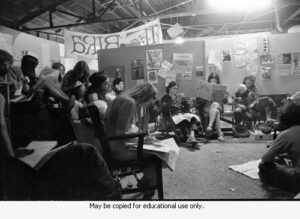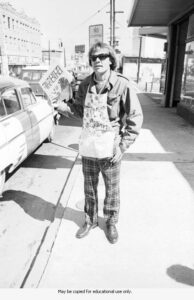Soaring
Between March and September 1968, the Bird rapidly expanded from a bi-weekly, black and white newspaper to a weekly paper with color graphics. The number of copies printed for each issue also grew as the paper became more and more popular in Atlanta, around the South, and even across the nation. When it began publication, the paper printed 10,000 copies per issue; by 1970, the number grew to 23,000 copies a week, making it the largest weekly publication in Georgia at the time. Papers were sold through a vast network of street sellers, subscriptions, sales at retail establishments, and eventually at street newspaper boxes. Complimentary subscriptions were offered to those incarcerated and in the military. The Bird featured both original reporting and graphics as well as material obtained through subscription syndication services, including Liberation News Service, Pacific News Service, and the Underground Press Service. The paper was innovative in its participatory reporting methods and its graphic style that balanced text copy, photography and art, and white space.


Although the paper became very popular and earned a wide readership, it was controversial from the beginning and ruffled feathers on many fronts. The street sellers faced regular harassment and even arrest from the police, many high school students selling or even possessing the paper on campus were suspended, the United States Postal Service refused delivery because of what it considered obscene content, printers declined working with the Bird for fear that they would lose other business, and outraged forces that were never identified or apprehended even fire-bombed the offices of the paper in 1972. Yet the Bird prevailed in its many legal disputes and remained extremely popular among its readers and fans.